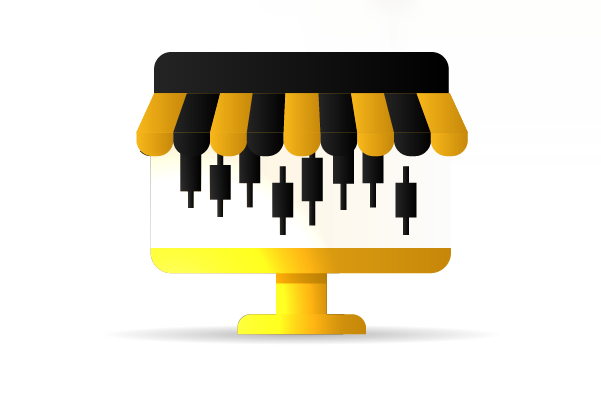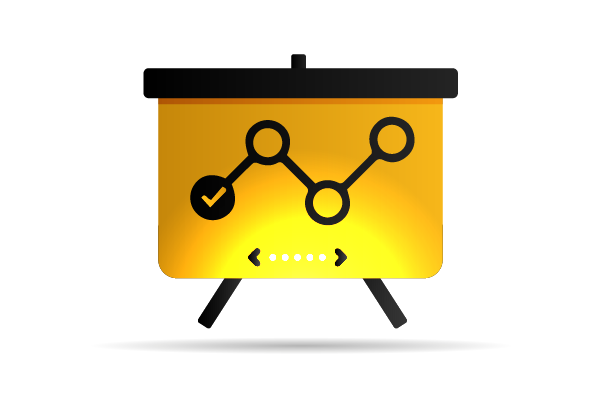Disclaimer: The information provided by Snap Innovations in this article is intended for general informational purposes and does not reflect the company’s opinion. It is not intended as investment advice or recommendations. Readers are strongly advised to conduct their own thorough research and consult with a qualified financial advisor before making any financial decisions.
What is Prop Trading Futures? A Comprehensive Guide

In the world of finance, prop trading (or proprietary trading) refers to financial institutions or firms trading stocks, bonds, futures, or other financial instruments with their own capital to generate profits. Unlike brokers who trade on behalf of clients and earn commissions, prop traders aim to use their firm’s money to take high-risk, high-reward positions for profit.
One of the most significant areas of proprietary trading is in futures markets. Futures contracts are agreements to buy or sell an asset at a future date at an agreed price. These contracts are used to hedge risks or speculate on price movements. The synergy between prop trading and futures can create opportunities for traders to capitalize on market volatility, leverage, and liquidity. This article will dive deep into prop trading futures, exploring strategies, advantages, risks, and what you need to know if you’re considering entering this space.
What is Prop Trading Futures ?

Prop Trading Futures, short for proprietary trading in futures, refers to a trading practice where financial institutions, banks, or specialized proprietary trading firms trade futures contracts using their own capital rather than managing client investments. These firms aim to generate profits by capitalizing on price fluctuations in futures markets, which can include commodities, indices, currencies, and interest rates. Since the capital used is internal, the profits and risks belong solely to the firm. In prop trading, the traders involved are employed by the firm and typically use a variety of advanced strategies, algorithms, and technologies to maximize their returns.
A key aspect of prop trading in futures markets is the use of leverage, which allows traders to control a large position with a relatively small amount of initial capital. This leverage amplifies both potential gains and losses, making futures trading particularly high-risk and high-reward. Traders use both short-term and long-term strategies, ranging from day trading to swing trading, and may apply technical and fundamental analysis to make their trading decisions. Since proprietary firms rely on their internal capital, they also have a strong incentive to take greater risks compared to firms managing client money. Traders in this environment are often incentivized with profit-sharing structures, where they receive a portion of the firm’s trading profits.
However, regulatory changes such as the Volcker Rule in the U.S. have placed limitations on speculative proprietary trading by banks, aiming to reduce the risk to the broader financial system. In essence, prop trading futures allows firms to profit from market volatility using leveraged positions, but it comes with significant risks due to the speculative nature of the market and the amplified exposure to financial losses.
Read More: A Complete Guide to Setting Up Your Trading Station for Success
Futures Contracts: An Overview
Futures contracts represent the obligation to buy or sell an asset at a predetermined price at a specific future date. They are standardized contracts traded on exchanges such as the Chicago Mercantile Exchange (CME), with underlying assets ranging from commodities like oil, gold, and corn to financial assets like currencies, indices, and bonds.
Futures are highly appealing to prop traders for several reasons:
- Leverage: Futures are typically traded on margin, meaning traders can control a large contract value with a relatively small initial deposit.
- Liquidity: Many futures contracts are highly liquid, allowing traders to enter and exit positions with ease.
- Volatility: Futures markets can experience significant price movements, providing opportunities for traders to profit from short-term fluctuations.
Why Choose Prop Trading in Futures Markets?

- Access to Capital: One of the most attractive aspects of joining a prop trading firm is the access to significant capital. Traders don’t need to use their own money, and they can leverage the firm’s resources to take larger positions.
- Leverage and Margin: Futures trading inherently involves leverage, allowing prop traders to magnify their positions. Many prop firms provide additional leverage, which can be a double-edged sword, offering increased profit potential but also greater risk.
- Risk Management Support: Prop firms often have sophisticated risk management systems in place, ensuring that traders adhere to risk limits. These measures protect both the trader and the firm from catastrophic losses.
- Structured Learning: Many firms offer training programs and mentorship to help traders develop strategies, manage risk, and become proficient in futures trading. This support can be invaluable for those looking to make a career in trading.
- Profit Potential: Successful prop traders can earn significant income through performance-based compensation. Profits are typically shared between the firm and the trader, with some firms offering high profit splits for top performers.
Strategies for Prop Trading Futures
 Trend Following: One of the most common strategies in futures trading is trend following. This strategy involves identifying and riding the momentum of a market trend, either upwards or downwards. Prop traders often use technical indicators such as moving averages, MACD, and RSI to confirm trend direction and strength.
Trend Following: One of the most common strategies in futures trading is trend following. This strategy involves identifying and riding the momentum of a market trend, either upwards or downwards. Prop traders often use technical indicators such as moving averages, MACD, and RSI to confirm trend direction and strength.
- Scalping: Scalping is a strategy where traders aim to profit from small price movements in the market. In futures trading, scalpers might enter and exit trades within seconds or minutes, taking advantage of tight price spreads and high liquidity. This strategy requires quick decision-making, technical proficiency, and constant attention to the markets.
- Spread Trading: This involves taking two positions in related futures contracts to profit from the price difference between them. Traders might go long on one futures contract and short on another. For example, a trader might buy a crude oil contract for delivery in December while selling a contract for delivery in January, betting that the price spread between the two will widen.
- Mean Reversion: Mean reversion strategies assume that asset prices will eventually return to their historical averages. Traders using this strategy look for assets that have deviated significantly from their mean and take positions expecting the prices to revert.
- News-Based Trading: Economic announcements and global events often drive significant volatility in futures markets. Prop traders can take advantage of these events by placing trades based on the expected market reaction to news such as interest rate changes, employment reports, or geopolitical developments.
- Arbitrage: Arbitrage involves exploiting price inefficiencies between related futures contracts or between futures and other financial instruments. For example, a trader might buy a futures contract on one exchange while simultaneously selling the same contract on another exchange where it’s priced higher, profiting from the difference.
Risk Management in Prop Trading Futures
 Trading futures comes with inherent risks, and managing those risks is crucial to long-term success in prop trading. Some of the key risk management techniques include:
Trading futures comes with inherent risks, and managing those risks is crucial to long-term success in prop trading. Some of the key risk management techniques include:
- Position Sizing: Proper position sizing is essential for managing risk in leveraged futures trading. Prop traders need to adjust their trade sizes based on their capital and the volatility of the asset being traded. Over-leveraging can lead to large losses if the market moves against a trader.
- Stop-Loss Orders: A stop-loss order automatically closes a position once the price reaches a pre-determined level, limiting potential losses. Prop traders often place stop-losses based on technical levels such as support or resistance points to protect their capital.
- Risk/Reward Ratio: Successful traders often maintain a risk/reward ratio that ensures they are taking trades where the potential profit outweighs the potential loss. A common ratio is 2:1, meaning the trader stands to make twice as much on a winning trade as they could lose on a losing trade.
- Diversification: Diversifying across different asset classes or contracts can reduce risk. Instead of concentrating all capital in one trade or market, traders can spread their positions to reduce exposure to any single asset.
- Volatility Management: Futures markets can be highly volatile, especially during times of economic uncertainty. Some traders use volatility-based indicators such as the Average True Range (ATR) to determine stop-loss levels or to stay out of the market during periods of excessive volatility.
Advantages of Prop Trading Futures
- Leverage: The high leverage available in futures trading allows traders to control large positions with a relatively small amount of capital. This amplifies both potential profits and losses.
- Liquidity: Many futures markets, such as crude oil or equity index futures, are highly liquid. This means there is significant volume being traded, allowing prop traders to enter and exit positions easily without significant price slippage.
- Diversification: Futures contracts are available on a wide variety of asset classes, including commodities, indices, currencies, and interest rates. This allows prop traders to diversify their portfolios and reduce risk.
- 24-Hour Markets: Many futures markets, especially in commodities and currencies, trade nearly 24 hours a day. This allows prop traders to respond to global events as they happen, taking advantage of opportunities that might arise outside of regular trading hours.
- Tax Advantages: In some jurisdictions, futures trading can be taxed more favorably than other forms of trading. For example, in the United States, profits from futures trading may qualify for the 60/40 rule, where 60% of gains are taxed as long-term capital gains, and 40% are taxed as short-term capital gains.
Read More: Top Market Making Companies in 2024
Risks of Prop Trading Futures
- Leverage Risk: While leverage can amplify profits, it also amplifies losses. Prop traders using high leverage can experience significant drawdowns if the market moves against them.
- Market Risk: Futures prices can be highly volatile, and market conditions can change rapidly. Traders need to be prepared for sudden shifts in price caused by economic data, geopolitical events, or other factors.
- Liquidity Risk: Although many futures markets are highly liquid, there are times when liquidity dries up, especially during periods of market stress. Low liquidity can result in slippage, where a trader’s order gets filled at a price worse than expected.
- Psychological Pressure: Prop traders often operate in high-pressure environments, where quick decision-making is crucial. The emotional toll of managing large positions, especially during volatile market conditions, can be significant.
- Operational Risk: Trading through a prop firm involves reliance on the firm’s infrastructure, including its trading platforms and risk management systems. System failures, connectivity issues, or human error can lead to significant losses.
Common Pitfalls in Prop Trading Futures
While futures trading can be lucrative, traders must avoid common pitfalls:
- Over-Leveraging: High leverage amplifies both gains and losses. Traders who over-leverage expose themselves to unnecessary risk.
- Lack of Risk Management: Failing to set stop-loss orders or not adhering to risk management principles can result in significant losses.
- Emotional Decision-Making: Prop traders must maintain emotional discipline. Trading based on emotions often leads to poor decision-making and loss of capital.
Psychological Aspects of Prop Trading Futures
The psychological demands of prop trading are immense. Traders must remain calm under pressure, especially during times of market volatility. Developing a disciplined mindset, staying patient, and following a well-defined strategy are essential traits for success.
Conclusion
Prop trading futures offer an exciting and potentially lucrative opportunity for skilled traders willing to take on the risks. The combination of leverage, liquidity, and volatility in futures markets can lead to significant profits, but traders must also be mindful of the potential downsides. With a solid strategy, effective risk management, and the backing of a prop trading firm, traders can maximize their potential in the futures markets.
For those considering a career in prop trading futures, it’s essential to understand the various strategies available, the importance of risk management, and the specific risks associated with leveraged trading. While the potential rewards are great, so too are the risks. Successful traders in this space are those who approach the markets with discipline, patience, and a commitment to continuous learning.
[/vc_column_text][/vc_column][/vc_row]
